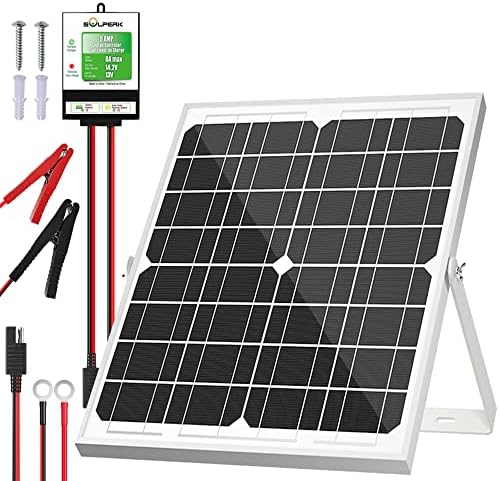# Breaking Down the Costs: How Much Should You Expect to Pay for Solar Panels?
When I first unpacked my solar panels on a sunny Saturday morning, I couldn’t shake off the sense of excitement bubbling inside me. Armed with a crisp cup of coffee, I admired my little setup in the backyard: panels set to drink in the sunlight, humming quietly, promising to power my off-grid dream. Of course, the journey wasn’t just about installing solar panels; it involved diving deep into a world of costs, returns, and best practices. If you’re considering going solar — whether for energy independence or environmental reasons — let’s break down the costs and help you figure out how much you should realistically expect to pay for solar panels!
## Understanding the Basics of Solar Panel Costs
### Initial Costs
When it comes to the initial costs of installing solar panels, think of it as an investment rather than a simple expense. On average, the price of solar panels can range anywhere from **$15,000 to $30,000** for a standard home, depending on various factors:
1. **Size and Capacity:** The more energy you need, the larger the solar array you’ll have to install. A typical residential solar system ranges between 5 to 10 kW.
2. **Type of Panels:** There are various types of solar panels available, including monocrystalline, polycrystalline, and thin-film, each with its own cost structure. Generally, monocrystalline panels are more efficient but may come with a higher price tag.
3. **Installation Costs:** Labor is where a chunk of your initial investment will go. Depending on your locality, installation costs can range from **$2,000 to $10,000** or more.
4. **Permits and Other Fees:** Don’t forget about potential permits, connection fees, and inspection costs, which can add anywhere from **$500 to $2,000** to your overall cost.
### Ongoing Costs
While the initial investment may seem high, it’s important to consider ongoing costs — or rather, the savings you’ll be making over time. Here are some ongoing costs to keep in mind:
1. **Maintenance:** Generally low, but you might want to budget around **$200 annually** for maintenance, cleaning, and minor repairs.
2. **Inverter Replacement:** Solar inverters typically last about 5 to 10 years and can cost between **$1,000 to $2,500** to replace, depending on the type.
3. **Monitoring System:** If you opt for a monitoring system to keep tabs on your solar energy production, this can range from **$100 to $500**.
### Financing Your Solar Panels
If the initial sticker shock feels daunting, you’re not alone! There are plenty of financing options available:
1. **Cash Purchase:** The straightforward approach, but not always feasible for everyone. This method lets you avoid interest costs.
2. **Solar Loans:** Companies offer specific loans for solar panel installation, often with low-interest rates. Expect to pay around **5-7% interest**.
3. **Leasing:** You can lease solar panels, which allows you to use them without ownership. However, this often doesn’t allow you to claim tax credits.
4. **Power Purchase Agreement (PPA):** Similar to leasing, but you pay for the power that the solar panels generate rather than for the panels themselves.
### Return on Investment (ROI)
On average, solar panel installations can pay for themselves in about **5 to 10 years**, depending on your local electricity rates and incentives. Plus, many states offer tax incentives that could help to bring your payback period down significantly.
#### Tax Incentives
You might want to tap into incentives like the federal solar tax credit, which allows you to deduct **26% of the installation cost** from your federal taxes. Be sure to check with local and state programs that can help reduce your upfront costs, too.
## Pro Tips for Cost-Efficiency
1. **Get Multiple Quotes:** Just like shopping for a car, it’s always wise to compare quotes from different solar companies. This could save you hundreds, if not thousands.
2. **Consider Your Energy Needs:** Tailor your system size to your actual energy consumption to avoid overspending on unnecessary capacity.
3. **Invest in Quality:** While cheaper options sound great, investing in high-quality panels can pay off in terms of energy efficiency and durability in the long run.
4. **Timing Matters:** Try to install your system during off-peak seasons when demand is low, often leading to better pricing and availability.
5. **Utilize Local Incentives:** Many local governments provide grants or subsidies that can help lower initial installation costs.
## The Future of Solar Panels: Is It Worth It?
The future of solar energy looks bright, literally! As technology improves, we see better efficiency rates, lower costs per watt, and extended lifespans for solar panels. Even in a world of fluctuating energy prices, investing in solar panels can offer considerable savings in the long run.
### Disposal Costs
As solar panels reach the end of their life cycle (around 25-30 years), you might wonder about their disposal. While recycling can cost a few hundred dollars, many companies have developed programs to take back and recycle old panels responsibly. Factor this into your budgeting for the long term.
## Conclusion: Empower Your Energy Future
Switching to solar panels can be life-changing, shifting your reliance on conventional energy to a more sustainable and cost-effective source. With careful consideration of the costs involved, smart financing choices, and a little bit of research, you can power your home with the sun’s energy and even contribute to saving the planet!
So, grab that cup of coffee and take the plunge! Investing in solar panels not only empowers your energy future but can also make for an exciting adventure toward self-sufficiency. Embrace the sun and watch your savings soar—one beam at a time!



